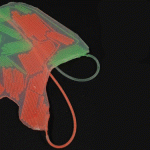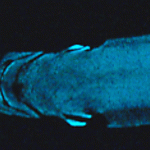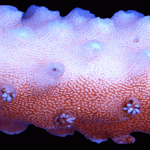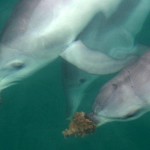
Octopuses have the advantage of being able to camouflage against selected features of nearby objects. Image: Zvika Livnat
Effective camouflage technique give octopi an evolutionary advantage.
Camouflage, the process of concealing oneself from an enemy by making them appear to be part of the natural surroundings, is used by numerous animals to assist them in finding food — and keep them from becoming food. Most animal camouflages work by matching their body to their background environment; however, a paper published in PLoS ONE suggests that octopi have the advantage of being able to camouflage against selected features of nearby objects.
The researchers, led by marine biology and biotechnology PhD student Noam Josef at Ben Gurion University in Israel, documented camouflaging octopuses both in the Red and the Mediterranean seas near Eilat, Isral and Napoles, Italy. They found that the marine creature could camouflage itself against nearly anything about his size, including coral, algae, a patch of sand or even nearby rock.
“Since octopuses are prayed by various predators with different visual systems, such a strategy may allow a hiding octopus to reach good camouflage in various environments and be hidden from multiple predators simultaneously.” Josef says. “If a more general pattern — a complete scene or copying exactly and to details a specific object, say a coral or an algae — would be presented, chances of a mistake or mismatch will be higher.”

Octopi have limited self-defending mechanisms, without their camouflage technique they would be extremely vulnerable to other marine animals. Image: Keren Levy
According to Josef, this effective camouflage is used to fool a wider range of predators. Researchers speculate that this could make the strategy more flexible and increase success in slightly different environments, since octopi can live in varied environments, from the tidal-zone on shore to the deepest oceans.
“Since octopuses have limited self-defending mechanisms, they are a protein treat to many marine animals, including sharks, dolphins, moray eels and more,” explains Josef. “Therefore an octopus has two major options: efficiently camouflage itself or get eaten. A poorly camouflaged octopus will be less favoured from evolutionary angle.”
Josef has been drawn to octopi since he started diving in the tropical water of the Red Sea. “Watching a camouflaging octopus simply leave you with awe. It’s as close as it gets to investigating an alien species.”
The researchers are currently conducting a study in Portugal, further investigating dynamic camouflage during locomotion, and what cephalopods — which include octopuses, squid and cuttlefish — actually see.






